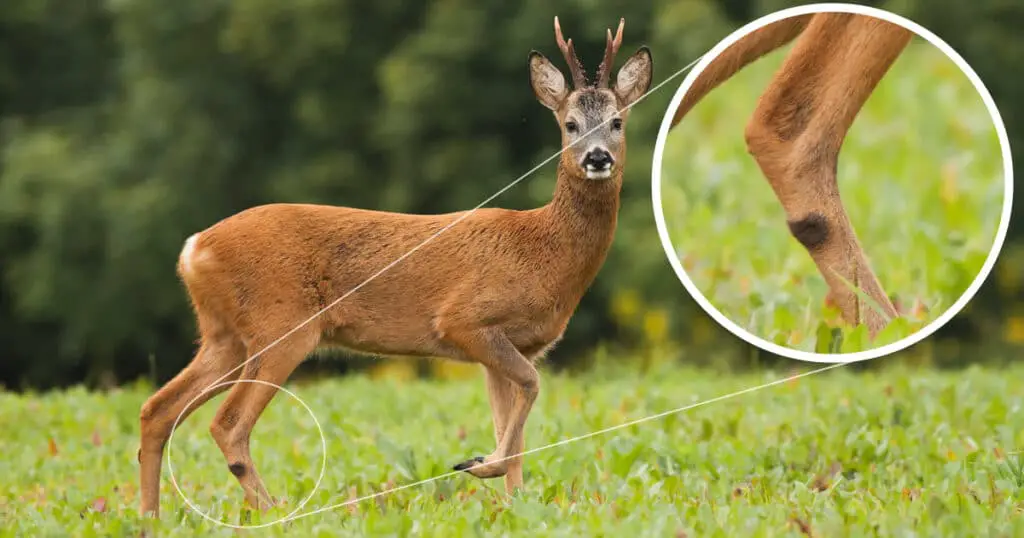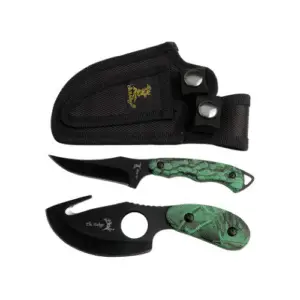Whitetail deer have several different kinds of glands, with each having its own purpose. The tarsal glands mean that each individual deer has its own distinctive scent so that others in their herd are able to recognize them. If you want to hunt deer, you’ll need to know where the tarsal glands are and how to remove them. Keep reading to learn all about that here.
Some hunters use the tarsal glands to lure new deer when hunting. In this essential guide to deer tarsal glands, we’ll discuss:
- What do deer tarsal glands do?
- How many tarsal glands does a deer have?
- Where are the tarsal glands on deer?
- Do both bucks and does have tarsal glands?
- Why do deer have tarsal glands?
- How to remove tarsal glands (deer scent butchering)
- Why is correct butchering important?
- Where are the deer’s other scent glands?
- How to use deer tarsal glands?
What Do Deer Tarsal Glands Do?
Deer use their tarsal glands in communication with each other. These glands play a pivotal role in something called “rub-urination.”
This happens when a deer urinates so that the urine touches the tarsal gland. The tarsal gland produces oily secretions. When they come into contact with urine, they mix with specific compounds.
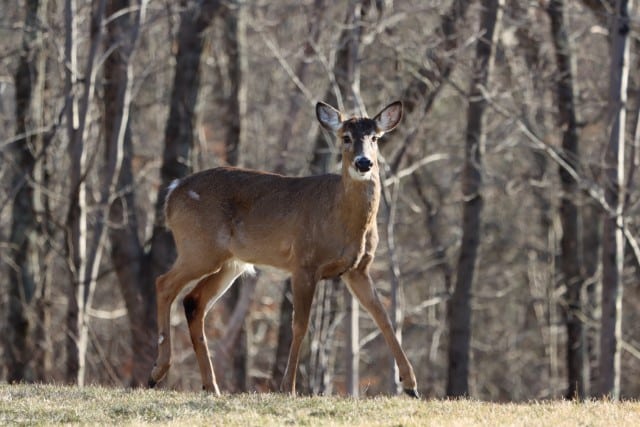
Bacteria in tarsal gland secretions change the odor and color of urine that comes in contact with it. This kind of urine has a specific odor and stains surfaces (such as down the inner area of the deer’s own leg).
Each deer has its own precise combination of bacteria in its tarsal gland sections. That is one reason rub urination scent has differences from deer to deer.
How Many Tarsal Glands Does a Deer Have?
Deer have two tarsal glands. Each tarsal gland is easy to locate, as they’re found on each rear leg in the hock area. The glands are beneath noticeable tufts of coarse hair.
The tarsal glands secrete their oils from the base of the hairs.
Where are the Tarsal Glands on Deer?
Each is located on the interior area of the back legs. This is specifically the area where the legs can bend.
You can identify the tarsal glands by the hair that sits on them. It has a light color and a tufted appearance.
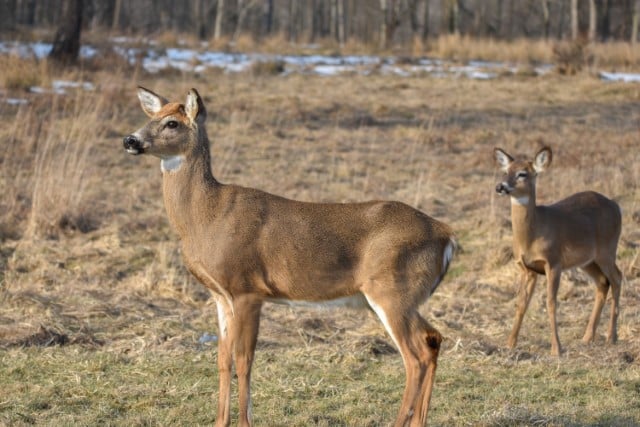
The tarsal glands are positioned so that the deer’s urine can run down against them. When the glands are producing secretions, they will mix with the urine and create the deer’s individual scent.
Do Both Bucks and Does Have Tarsal Glands?
Yes, both bucks and does have these glands. Fawns have them, too.
Bucks, however, are the deer that most often rub-urinate, and this ramps up during the rut (breeding season).
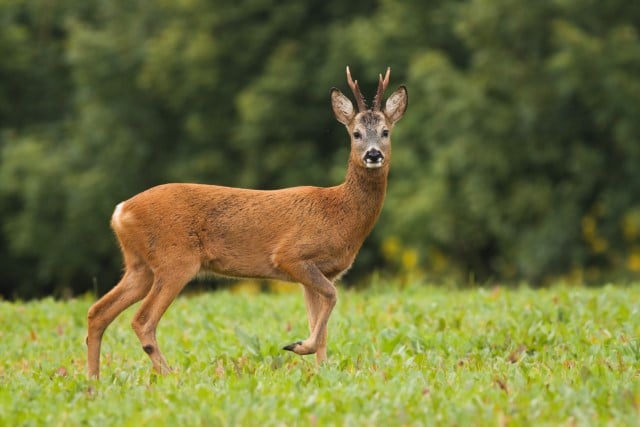
When bucks age and compete with each other during the rut to achieve dominance over other males, they display rub-urination more often.
Why Do Deer Have Tarsal Glands?
Deer have tarsal glands to create secretions that combine with urine to create a scent that other deer will recognize. Deer (especially bucks) may spray urine with tarsal gland secretion in order to show dominance.
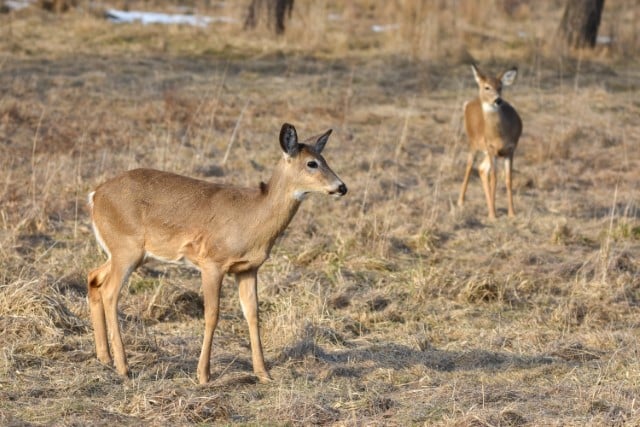
Deer also directly smell the tarsal glands of other of their own deer species, so that they can know and remember their scent.
Cervids have impressive senses of smell, with 300 million scent receptors in their noses. Their brains are also extremely effective in storing and remembering scent information, ensuring they can recognize other animals.
When deer get ready to secrete oil from their tarsal glands, the hairs on the gland flare and create a rosette shape. It’s possible for every kind of deer to release secretions from their tarsal gland any time of year.
How to Remove Tarsal Glands (Deer Scent Gland Butchering)
While you can use tarsal glands, be extremely cautious in how you handle them. These glands contain bacteria that may make you ill.
Never touch tarsal glands with your bare hands. Get a pair of rubber gloves and keep them on as you remove the tarsal glands from the deer and whenever you touch them.
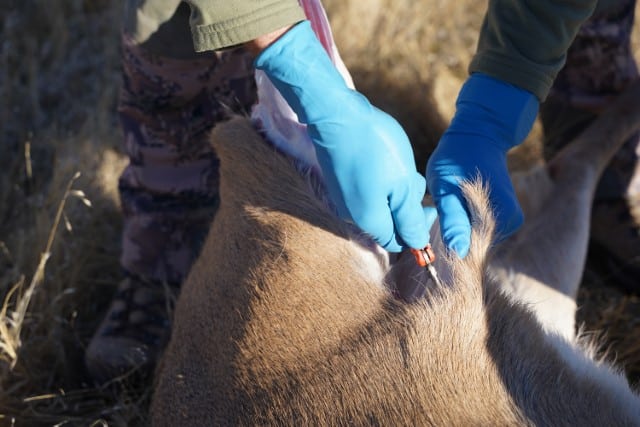
Use a knife to cut out the glands prior to doing proper field dressing.
It’s important that you keep the tarsal glands cool. Put them in a freezer or at minimum a fridge as soon as you possibly can.
You should store the glands securely in a plastic zip-loc bag and write relevant information on it.
This includes data on the deer, including how old you think it is and whether it’s a doe or a buck. Keep the tarsal glands in the freezer until you plan to use them.
Another reason to remove tarsal glands is how they can change the taste of your venison, most people believe in an unpleasant way. That is because of the musky smell which lends an unwanted flavor.
Our Favorite Field Dressing Knife Set
We like fixed-blade hunting knives for field dressing and skinning deer (it’s a safety thing).
This 2-piece knife set is razor sharp, comfortable in the hand, and includes an effective gut hook. It’s a budget-friendly option that will be perfect for most hunters.
WorldDeer.org is reader supported. If you make a purchase after clicking a link, we may earn a commission at no additional cost to you.
Why is Correct Butchering Important?
Improper butchering can ruin your deer meat. After all the trouble of stalking and shooting your deer, you don’t want all that venison to go to waste.
Field dressing must be done before you start cutting up the meat and separating the different parts.
Removing the tarsal glands is an important part of field dressing. You must also remove all the deer’s organs.
This is crucial, as leaving the organs in will lead to your venison getting spoiled.
Don’t put off field dressing. It’s something that must be done without delay once you kill the deer.
Remember to bring the deer somewhere relatively clean on the ground to do the field dressing. Never do this process in noticeably dirty locations, such as spots with mud or water.
What are the Deer’s Other Scent Glands?
Deer have several other scent glands in addition to the tarsals. Let’s explore them below:
Forehead Glands
Deer, both male and female, have glands in their foreheads that help spread their scent. This is why deer will rub their foreheads on tree branches.
Older bucks tend to have the most effective forehead glands. This is especially true during the rut (or breeding season).
Preorbital Glands
The deer’s preorbital gland is found at the bottom of a deer’s eyes. Like the forehead glands, deer use these glands to rub their scent on many different objects, such as trees and bushes.
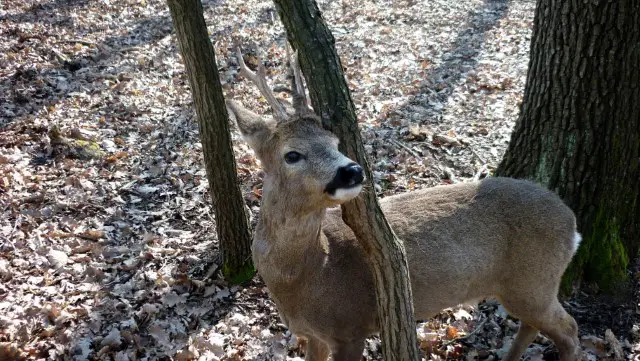
While many experts believe that the preorbital glands spread scent, others think that rubbing this area is done just to bring more moisture to the eyes.
Interdigital Glands
The interdigital glands reside in between the deer’s hooves.
These glands secrete compounds with an unpleasantly sour scent. Some hunters compare it to a sour dairy product.
These glands deposit a scent in a deer’s hoof prints. Experts think it may be strong enough to help you determine specific information about the deer, such as its age.
Metatarsal Glands
The metatarsal glands are located on the hind legs, specifically on the outer portion of the lower legs. The secretion from these glands doesn’t have much of an odor on its own.
You can locate this gland by finding some fluffy white hair located over the hoof.
Nasal Glands
As implied by the name, the nasal glands reside in the deer’s nose. The nasal glands are there to keep the nose properly lubricated through mucus production.
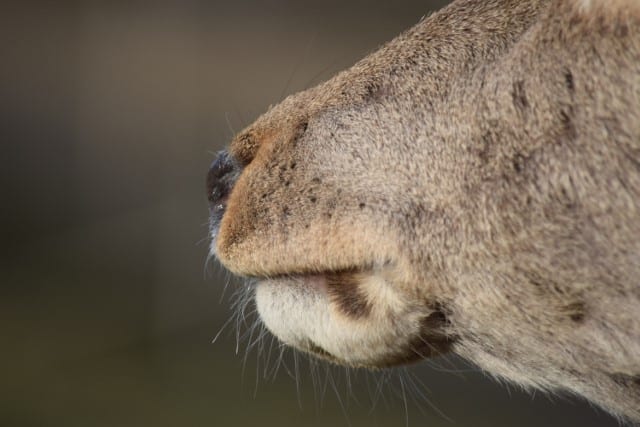
This film of mucus is essential for the deer to be able to smell accurately, as it catches smell molecules. Without the nasal glands, deer wouldn’t have the impressive sense of smell they are known for.
Preputial Glands
This gland is only present in male deer (bucks), as it is found within its penile sheath. This gland is important during the breeding season.
How to Use Deer Tarsal Glands?
Hunters may use deer tarsal glands to help them with their sport. If you hunt deer, you may want to retrieve the tarsal gland and use it to attract other deer to shoot.
If you kill a buck, you can use the glands in combination with rattling to get the attention of other bucks that want to fight for dominance. If you kill a doe and take her tarsal glands, you can use these to attract bucks.
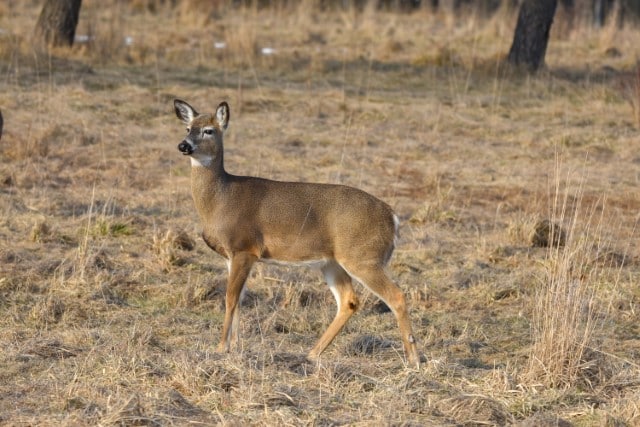
There are several methods for placing tarsal glands outdoors to help you with hunting. You can try hanging the tarsal glands from the branches of a tree.
This often maximizes the scent being transported by the wind, so there is a strong chance of other deer detecting the scent and thinking it is another deer.
Make sure you put a hole in the area surrounding the gland, using the tip of your knife. This is how you can get a string all the way through and then hang it from the branch.
Try to position the gland so it is hanging a few feet above ground level. Of course, a major consideration is your shooting position and where you want deer to appear.
If you don’t want to bother with putting string through the glands, you can just stick them in the nook of a branch or young tree.
If you’re going to use tarsal glands to help you with hunting, only use them when you’re active in the field. Ensure you never accidentally leave them in the field when you leave.
Final Thoughts About Deer Tarsal Glands
Understanding the tarsal glands and their function is essential knowledge for deer hunters.
While you need to remove these from the deer after you kill it, you may find they come in handy when looking for other deer on your hunting adventures.
We are a participant in the Amazon Services LLC Associates Program, an affiliate advertising program designed to provide a means for us to earn fees by linking to Amazon.com and affiliated sites.

